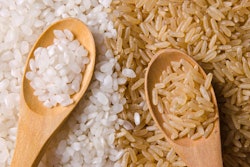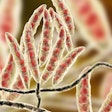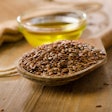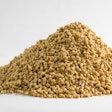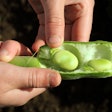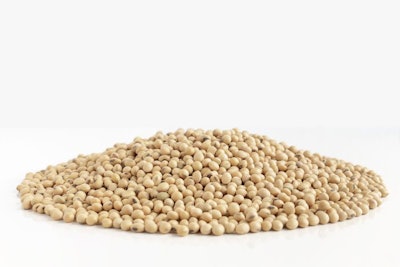
Learn about 3 major oligosaccharides in soybeans
Soybean seeds, which are the most widely used source of protein for animal feeds, contain approximately 35-40% carbohydrates. These are classified in two broad categories: as structural (fiber components), and as non-structural (storage). Oligosaccharides are non-structural carbohydrates, and along with sucrose and other free sugars are found at about 15% out of the total carbohydrate concentration – or about 5-6% in soybeans. These oligosaccharides are traditionally considered as anti-nutritional factors, along with trypsin inhibitors, lectins and glycinin in soybeans.
The term oligosaccharides comes from two words: oligo, meaning a few, and saccharides, meaning sugars. In essence, this term describes small polymers of sugars; as opposed to large ones such as the polysaccharides of starches and celluloses.
Soybeans contain the raffinose family of oligosaccharides (RFOs), which include three major oligosaccharides: raffinose, stachyose and verbascose. All three are characterized by the fact that they contain the sugar galactose in their basic structure. More precisely, raffinose contains one glucose, one fructose, and only one galactose unit. Stachyose is like raffinose, but with one extra unit of galactose. Similarly, verbascose is like raffinose, but with two extra units of galactose.
Stachyose is the main RFOs member in soybean seeds. In soybean meal, oligosaccharides are concentrated as oil is removed. Thus, their concentration can be range between 7% to more than 11% with stachyose being around 5% to 7%, and raffinose only 1% to 4%, whereas verbascose is encountered in minute amounts. Of course, these numbers vary according to soybean genetics.
These oligosaccharides have a certain role to play in soybeans. Most authorities agree that this role appears to be protection from environmental stresses such as drought and tolerance to cold conditions. This may appear inconsequential, but soy genetics tailored for dry or cold climates may have increased levels of RFOs, something that needs to be monitored in practice.
The enzyme needed to break the chemical bonds in RFOs is called alpha-galactosidase.
Monogastric animals and humans do not produce this enzyme to digest such oligosaccharides. In contrast, certain bacteria found in the digestive tract can digest and then ferment RFOs. Nevertheless, the fermentation results in the production of gases such as CO2 and methane. In addition, it has been proposed that these RFOs may be partially responsible for diarrhea in young animals when consumed at high enough quantities, hence their traditional classifications as anti-nutritional factors.
In a recent study, reported by Alfred Blanch (Hamlet Protein), it was shown that RFOs may have a positive role to play in young animal nutrition – assuming the dosage is correct. For example, in a broiler trial, there was observed a linear effect on the feed conversion rate: the higher the amount of stachyose and raffinose (RFOs) in the diet, the higher (worse) the conversion rate. Nevertheless, it was also observed that at relatively low dietary levels of RFOs, broiler live weight was improved. It was hypothesized that a certain quantity of RFOs can act positively in the gut of the young animal, perhaps in the role of a prebiotic. This coincides with other observations that promote the use of non-digestible small-chain saccharides as prebiotics in young animals.


